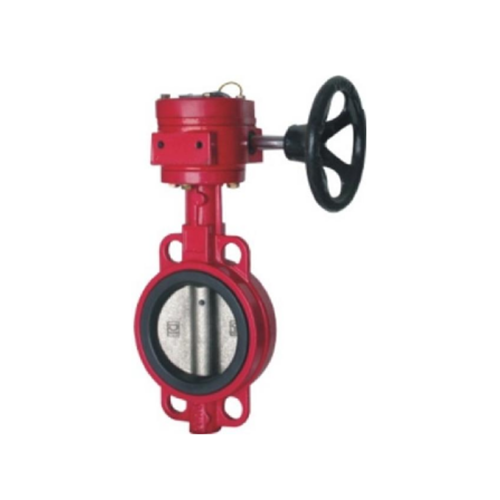
Check Valve Applications in the Food and Beverage Industry
Introduction
Check valves are essential components in fluid handling systems, ensuring unidirectional flow and preventing backflow, contamination, and equipment damage. In the food and beverage industry, maintaining hygiene, product integrity, and operational efficiency is critical. Check valves play a vital role in achieving these objectives by controlling fluid movement in processing, packaging, and cleaning systems.
This article explores the applications of check valves in the food and beverage industry, their types, material considerations, and compliance with industry standards.
---
Types of Check Valves Used in the Food and Beverage Industry
Several types of check valves are employed in food and beverage processing, each suited for specific applications:
1. Swing Check Valves
- Feature a hinged disc that swings open under forward flow and closes when flow stops.
- Used in low-pressure applications where minimal pressure drop is required.
- Common in liquid transfer lines, such as dairy and juice processing.
2. Spring-Loaded Check Valves
- Utilize a spring mechanism to ensure quick closure, preventing backflow and water hammer.
- Ideal for high-pressure systems, carbonated beverage lines, and CIP (Clean-in-Place) systems.
3. Diaphragm Check Valves
- Use a flexible diaphragm to control flow, making them suitable for viscous fluids like syrups and sauces.
- Resistant to clogging and easy to clean, making them ideal for hygienic applications.
4. Ball Check Valves
- Contain a free-floating or spring-loaded ball that seals against a seat to prevent backflow.
- Used in beverage dispensing systems and high-viscosity product transfer.
5. Wafer Check Valves
- Compact design, fitting between flanges without additional space requirements.
- Common in piping systems where space is limited, such as breweries and dairy plants.
6. Foot Valves (with Strainers)
- Installed at the suction end of pumps to maintain prime and prevent debris entry.
- Used in water intake systems for beverage production.
---
Key Applications in the Food and Beverage Industry
1. Liquid Processing and Transfer
Check valves ensure smooth flow in:
- Dairy Processing – Milk, cream, and yogurt transfer without contamination.
- Juice and Soft Drink Production – Prevents mixing of different batches.
- Brewing and Distilling – Controls wort, beer, and spirit flow in fermentation and bottling lines.
2. CIP (Clean-in-Place) Systems
- Prevents backflow of cleaning chemicals into product lines.
- Ensures proper sanitation without disassembly.
3. Carbonated Beverage Handling
- Spring-loaded check valves maintain pressure in CO₂ injection systems.
- Prevents loss of carbonation and contamination.
4. Syrup and Concentrate Handling
- Diaphragm and ball check valves handle high-viscosity fluids without clogging.
- Used in flavoring and sweetener dosing systems.
5. Water Treatment and Filtration
- Foot valves with strainers prevent debris from entering water purification systems.
- Ensures clean water supply for beverage production.
6. Packaging and Filling Lines
- Prevents product backflow in filling machines, ensuring accurate dosing.
- Used in bottle, can, and pouch filling applications.
---
Material Selection for Hygienic Performance
Material compatibility is crucial to prevent contamination and corrosion. Common materials include:
1. Stainless Steel (304, 316L)
- Resistant to corrosion, acids, and high temperatures.
- Meets FDA and EHEDG standards for food contact surfaces.
2. PTFE (Teflon) and EPDM Seals
- Chemically inert, suitable for aggressive cleaning agents.
- Used in diaphragm and spring-loaded check valves.
3. Sanitary Tri-Clamp Connections
- Allows easy disassembly for cleaning and inspection.
- Common in dairy, pharmaceutical, and beverage industries.
4. FDA-Compliant Elastomers
- Silicone, Viton, and Buna-N gaskets ensure food-grade sealing.
---
Industry Standards and Compliance
Check valves in the food and beverage industry must adhere to:
- FDA (Food and Drug Administration) – Ensures materials are non-toxic and safe for food contact.
- EHEDG (European Hygienic Engineering & Design Group) – Certifies hygienic design for easy cleaning.
- 3-A Sanitary Standards – Validates valves for dairy and beverage applications.
- ASME BPE (Bioprocessing Equipment) – Ensures compliance in high-purity fluid systems.
---
Challenges and Maintenance Considerations
1. Cleaning and Sanitation
- Valves must be designed for CIP/SIP (Sterilize-in-Place) compatibility.
- Smooth surfaces and minimal crevices prevent bacterial buildup.
2. Wear and Tear
- Frequent cycling in high-pressure systems may degrade seals and springs.
- Regular inspection and replacement of worn parts are necessary.
3. Product Compatibility
- Valves must resist corrosion from acidic, sugary, or alcoholic products.
4. Pressure and Flow Control
- Improper valve selection can cause water hammer or flow restrictions.
---
Conclusion
Check valves are indispensable in the food and beverage industry, ensuring product safety, operational efficiency, and regulatory compliance. Selecting the right type, material, and design is critical for maintaining hygiene and preventing contamination. With advancements in hygienic valve technology, manufacturers can optimize processing, reduce downtime, and enhance product quality.
By understanding the applications and requirements of check valves, food and beverage producers can make informed decisions to improve their fluid handling systems.
यह वेबसाइट यह सुनिश्चित करने के लिए कुकीज़ का उपयोग करती है कि आपको हमारी वेबसाइट पर सर्वोत्तम अनुभव मिले।
टिप्पणी
(0)